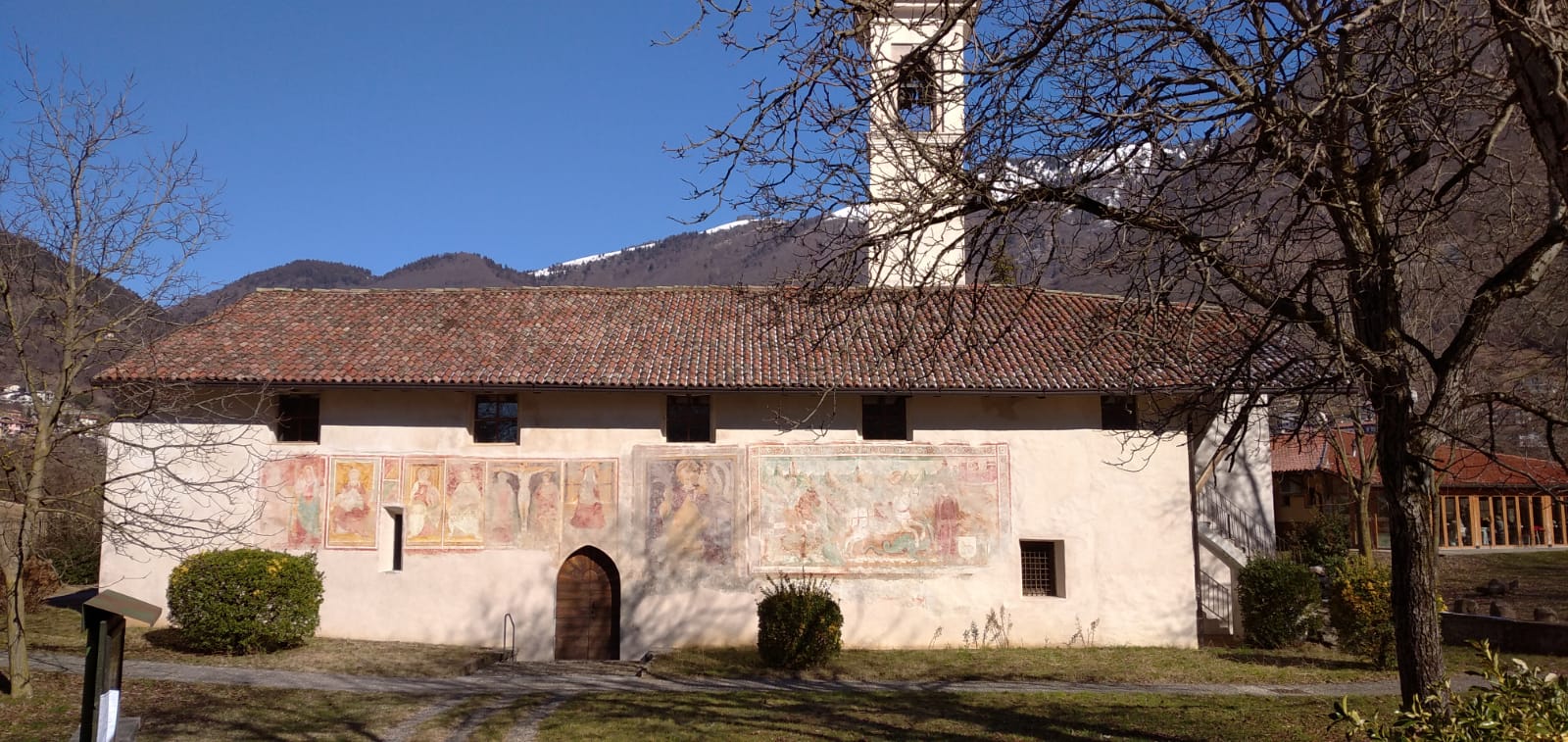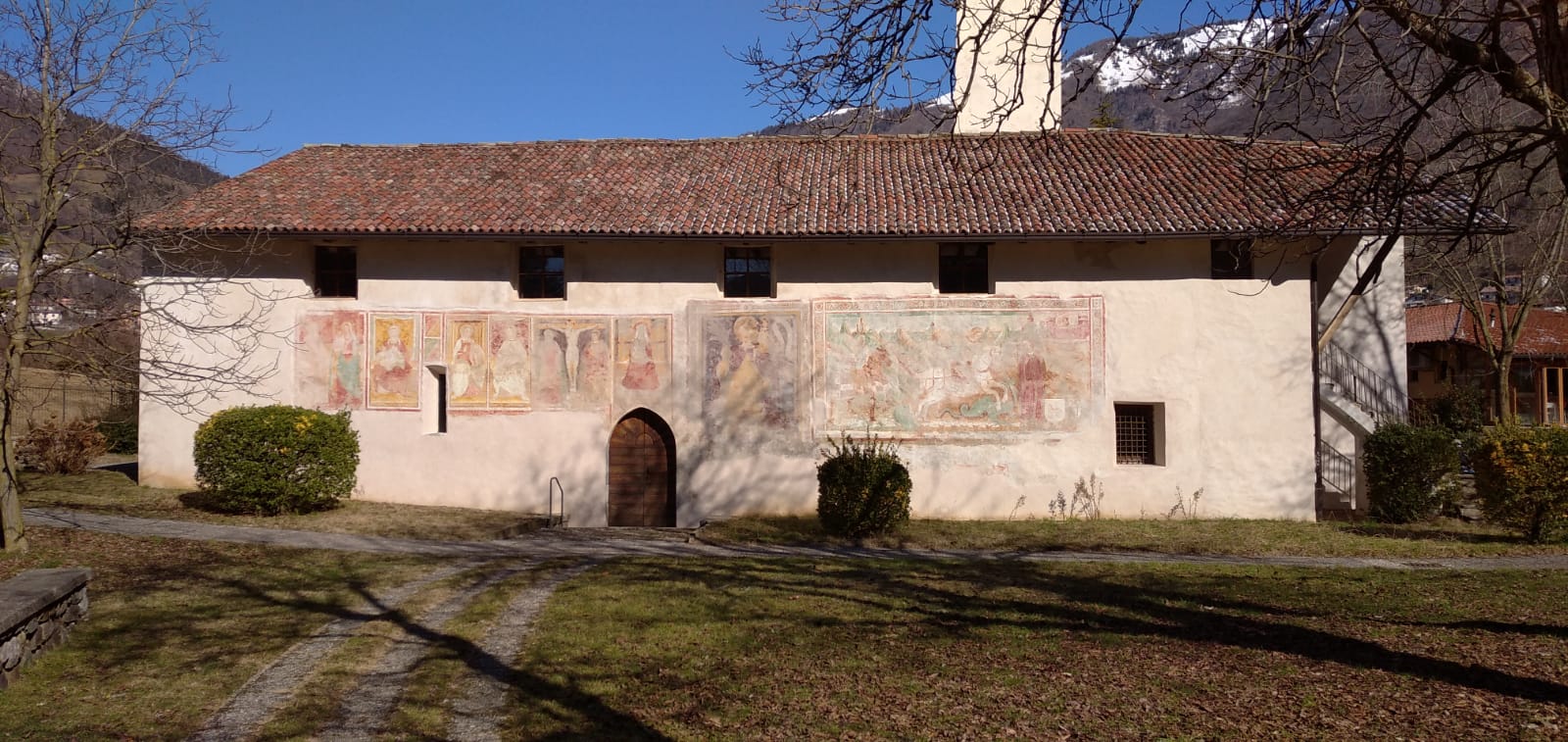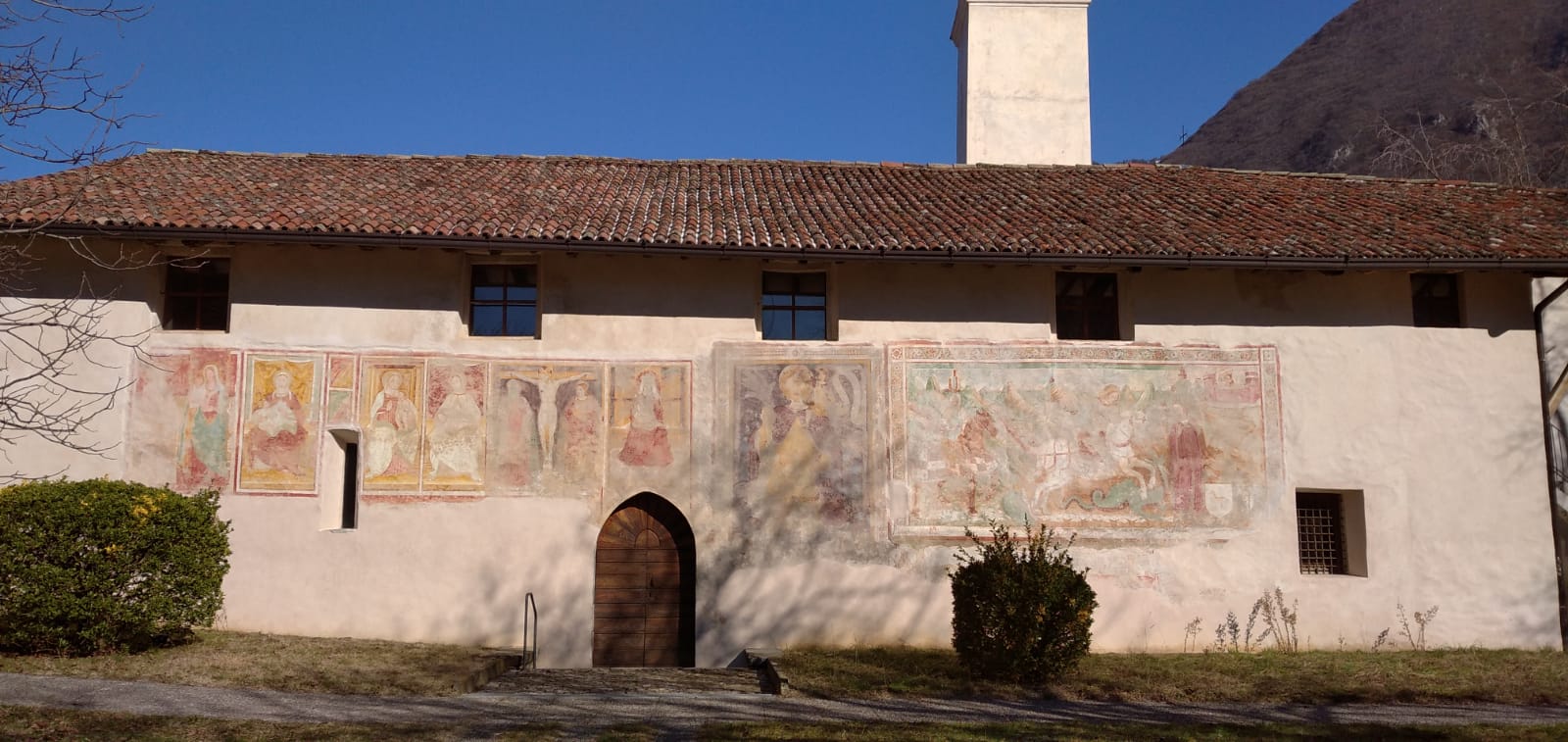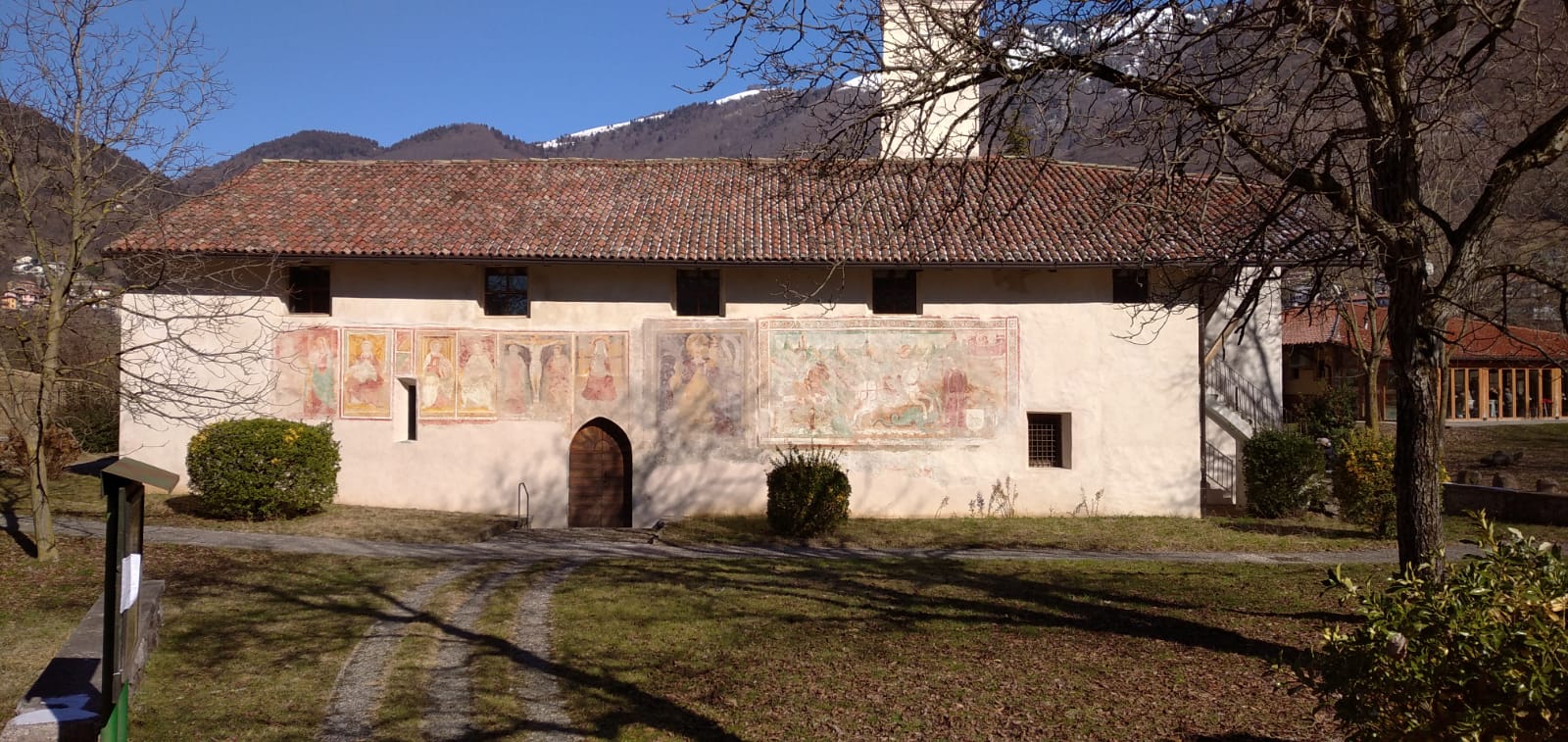



Church of San Giorgio in Cislano
Before reaching Zone from the road that goes up from Marone, on a terrace of fluvioglacial origin, we meet the town of Cislano where the splendid church of San Giorgio stands. It is a building built in the fifteenth century, with additions in the seventeenth, which preserves interesting artistic evidence both inside and outside. The church was dependent on the Cathedral of Brescia and included in the benefits of the Chapter in 1410; it is probable that at this date he already had the concession of the baptismal font and therefore considerable autonomy from the parish priest.
The building has two entrances: the main one is accessed through a granite ogive portal surmounted by a lunette; more interesting is the side facing the road where there is an ogive entrance, a single lancet window and eight frescoed panels with saints plus a portion, located at the bottom, which has been mutilated for a large part of the plaster.
The very spacious interior is divided into three aisles connected to each other by the single sloping roof that rests both on the side walls and on the masonry – formed by arches placed on granite columns with multiform capitals – which separates the naves. In the roof you can see the tiles decorated with simple but effective geometric and floral motifs. At the end of the fifteenth century, the heads of the side aisles were transformed, with an ingenious solution, into chapels by closing the arch and lowering it so as to delimit a square space communicating on two sides with the rest of the church. More invasive was the seventeenth-century intervention that affected the apsidal area: it was transformed into a rectangular room covered with a barrel vaulted ceiling and pilasters and cornice were introduced. Here was also placed a wooden frame with a broken tympanum in which is enclosed the good canvas by Ottavio Amigoni of 1651 depicting the Madonna and Child and the saints Giorgio and Rocco presented by the client.
Of the chapel of Saints Stephen and Bernardino of Siena (head of the left aisle) there remains a fresco that served as an altarpiece. Inserted in a painted architectural structure is the Trinity between the saints Catherine of Siena and Cristoforo. The fresco, degraded and integrated, is very interesting for its Gothic taste and for the choice of inscribing the three silhouettes in an architecture that imitates a wooden triptych with polylobed arches resting on slender columns with capitals. The San Bernardino da Siena, painted on the pillar, is certainly of a different hand than the triptych. On the wall that follows (left of the presbytery) there is a poorly reduced fresco that survived the destruction of the seventeenth-century renovations. It is the Madonna and Child who receives the homage of Saints Francis, George and the offerer; the latter, dressed in white, could be a monk. The image is an example of the way the building was decorated in which individuals and families managed portions of the walls by having their patron saints frescoed, affixing the date and dedicatory inscription.
The chapel of the Madonna della Neve, located at the head of the right aisle, is entirely frescoed by workers of the last decades of the fifteenth century. The Annunciation is depicted on the front of the arch towards the entrance; in the one towards the nave there is the coat of arms of the Almici family and a false niche with objects; the cross vault is decorated with floral motifs with the sun beamed with the IHS in the center. As an altarpiece there is the fresco depicting the Vision of Augustus in which the Virgin and Child appears between cherubs and angels holding cartouche on the sides. The Tiburtina sibyl with the cartouche of the prophecy (“He you see is more important than you, adore him”) indicates the Virgin to the emperor kneeling in the center (Pope Sixtus IV was recognized in the character), followed by dignitaries on horseback.
Valuable as it is rare is the large granite basin found near the church in which among the decorations, engraved and in bas-relief, there is the date 1404; it is likely that it is the ancient baptismal font.
Federico Troletti












